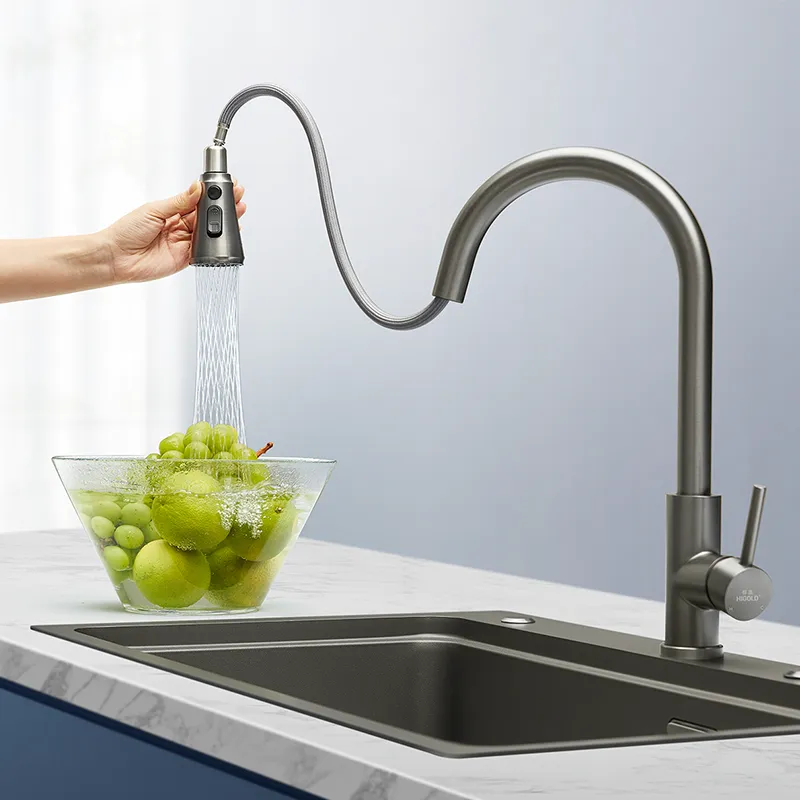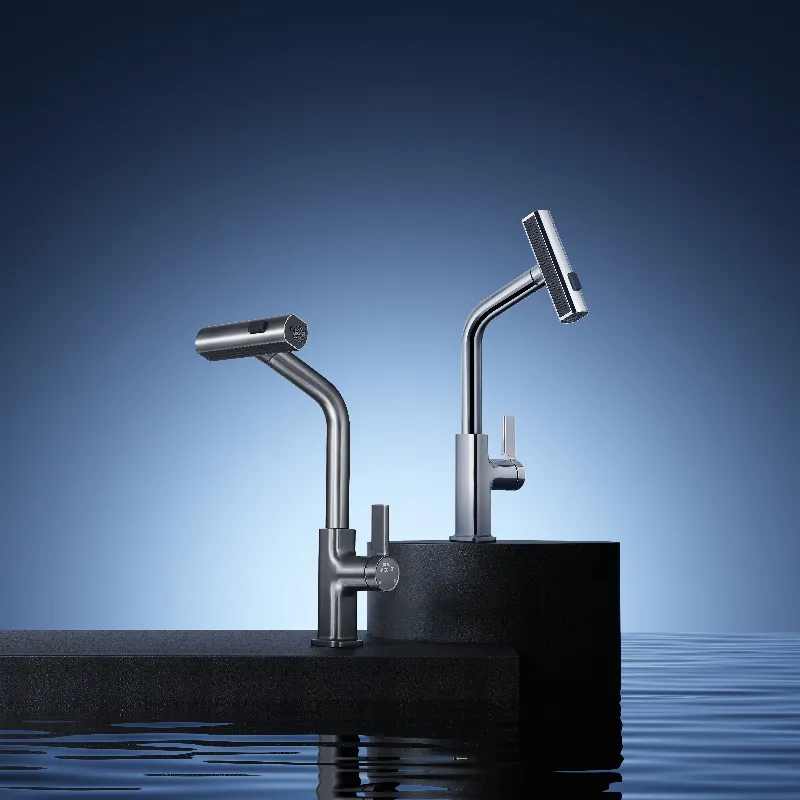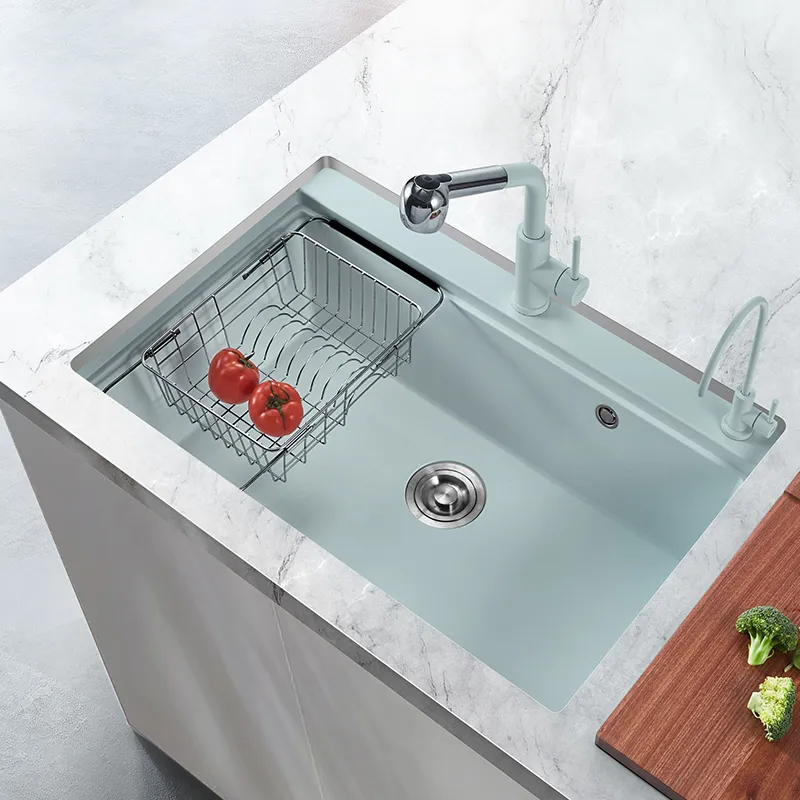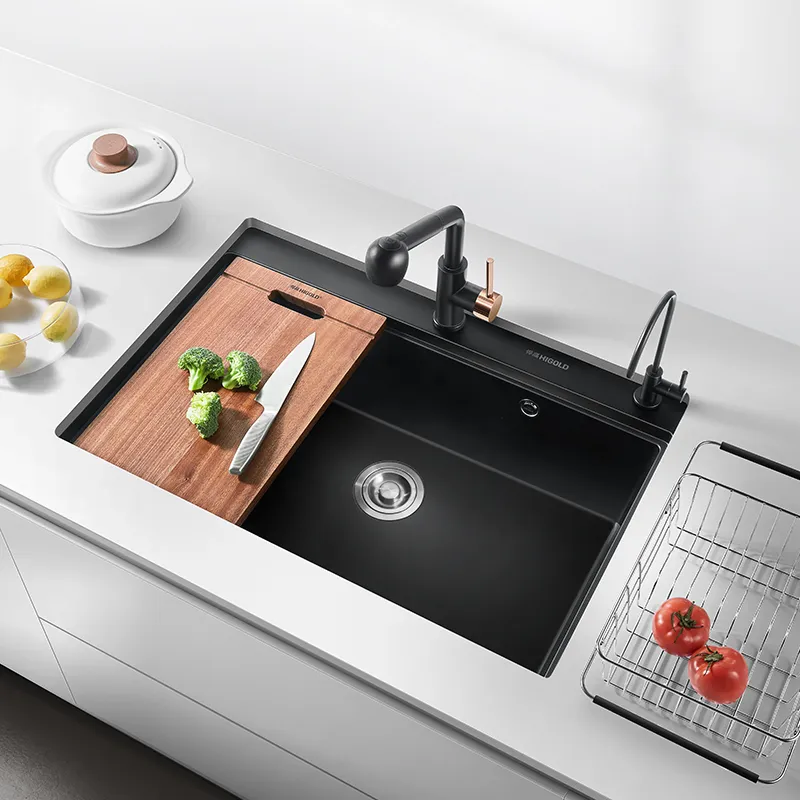In modern kitchens, sinks are essential fixtures in every home. As kitchen functional requirements diversify, sink designs and accessories are becoming increasingly complex. The holes in a sink, in particular, may appear simple in appearance, but they actually perform many important functions.
Common kitchen stainless steel sinks typically feature three holes. These holes aren't just for aesthetics; they also provide convenience and practicality for kitchen use. So, what are the functions of each of these three holes? Let's delve deeper today.

What are the design principles behind kitchen sink holes?
The design of modern kitchen stainless steel sinks not only considers aesthetics but also functionality and ease of use. Therefore, sinks are typically designed with several holes based on the needs of kitchen appliances. Typically, a sink will have one main hole and two additional holes. These three holes are standard features of a kitchen stainless steel sink.
· Main hole: This is typically the drain outlet of a kitchen stainless steel sink, connected to the sewer to remove wastewater from the sink.
· Additional Hole 1: Commonly used for installing a kitchen faucet.
· Additional Hole 2: Can be used to install sink accessories such as a dishwashing liquid dispenser, strainer, or additional faucet.
Through these holes, a kitchen stainless steel sink not only provides basic drainage and water supply functions but also allows for the installation of additional accessories as needed, thereby improving overall kitchen efficiency and convenience.

What are the three holes on a kitchen stainless steel sink used for?
1. Main Hole: Drainage
First, we need to understand the sink's main hole. Every kitchen stainless steel sink has at least one main hole, which serves a straightforward function: draining water from the sink to the sewer. The main hole's size and location are typically designed to ensure smooth water flow and prevent overflow.
The main hole's size typically matches the connecting sewer pipe, so its diameter is typically between 3 and 4 inches. If the sink has multiple holes, their placement will also be flexibly designed to suit the size and shape of the sink to ensure smooth drainage.
In addition, the main hole is often surrounded by overflow prevention features, such as an overflow hole or overflow channel. Overflow holes are typically located on the upper rim of the sink, helping to direct excess water when the water level is too high, preventing overflow and keeping the kitchen dry.
2. Additional Holes 1: Faucet Hole
The second hole on a kitchen stainless steel sink is typically used to install a faucet. A faucet is an essential feature in the kitchen, providing a source of fresh water, so its location is crucial. Most kitchen stainless steel sinks have the faucet hole located at the rear of the sink, ensuring water flow and convenient cleaning of dishes, utensils, and other items.
The size of the faucet hole is generally determined by the faucet's specifications, with a typical standard diameter of 1-1.5 inches. This hole, located on the rim of the kitchen stainless steel sink, is often integrated into the sink's design to provide both aesthetic appeal and functional operating space.
The faucet hole can accommodate different types of faucets, such as single-handle faucets, two-handle faucets, and sensor faucets. If your kitchen requires additional functionality, such as filters or spray heads, additional holes can be designed on the kitchen stainless steel sink to accommodate these accessories.
3. Additional Hole 2: Accessory Mounting Hole
The third hole on the kitchen stainless steel sink can be used to mount various accessories. These accessories further enhance the sink's convenience and efficiency. Common accessories include:
· Dishwashing Liquid Holder: This accessory attaches to the additional hole on the sink for convenient daily use. It typically features a dedicated slot for holding a bottle of dishwashing liquid or detergent.
· Garbage Disposer: Some kitchen stainless steel sinks have an additional hole for mounting a garbage disposer. Garbage disposers effectively grind kitchen waste into fine particles and discharge them through the drain, significantly reducing the difficulty of waste disposal.
· Filter: Some kitchen stainless steel sinks can also be equipped with a water filter to provide purer drinking water. The filter hole is often located on the side of the sink, making it easy to replace the filter cartridge and clean it.
· Spray Head: The additional hole on the side of the kitchen stainless steel sink is also often used to mount a spray head. The spray head provides flexible water flow control, making it easy to clean the inside and outside of the sink, rinse fruits and vegetables, and clean dishes.
After installing these accessories, the functionality of your kitchen stainless steel sink is greatly enhanced. It not only performs basic cleaning tasks but also meets more needs, making kitchen operation more convenient.

How to choose the right kitchen sink hole configuration?
While most kitchen stainless steel sinks are designed with three holes by default, the needs of each home and kitchen vary, so choosing the right sink hole configuration is crucial. Considering kitchen space, usage habits, and personal needs, users can choose the right sink hole configuration based on the following factors:
1. Space Size
If the kitchen space is small, the sink hole configuration should be simple and effective, avoiding excessive complexity. Generally, small sinks only require a main hole and a faucet installation hole; additional holes can be installed as needed.
2. Functional Requirements
The different needs of kitchen users also influence the choice of sink hole configuration. If the kitchen user prefers features such as a garbage disposal or water filter, additional holes on the kitchen stainless steel sink are particularly important. When selecting a sink, users should consider the proper placement of faucet holes and accessory holes to ensure smooth installation of all accessories.
3. Aesthetics
The aesthetics of a kitchen stainless steel sink are equally important. Especially in modern kitchens, sinks are not only practical but also decorative. Therefore, when choosing a sink hole configuration, consider the sink's appearance and ensure the hole placement coordinates with the overall kitchen style.

Are there low MOQ options for startup businesses or trial orders?
Yes, Higold accommodates smaller buyers by offering low minimum order quantities (MOQs) for selected product lines. This makes it easier for startups, local resellers, or testing markets to place trial orders without committing to large volumes.
The company also provides tailored advice to help small businesses choose cost-effective products with strong resale potential. Contact Higold for available low-MOQ offers and pricing tiers.


